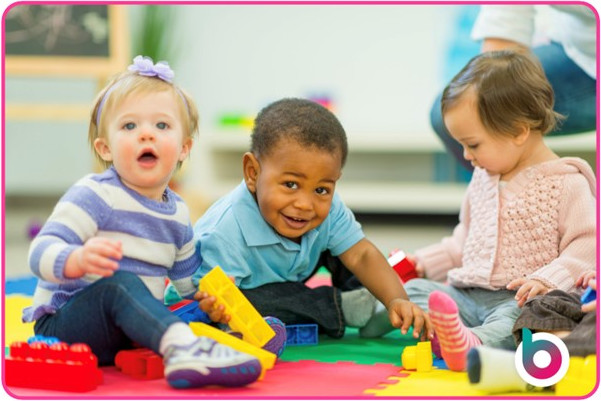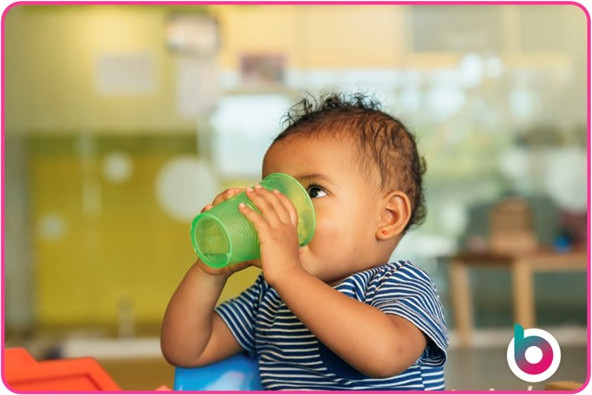The latest information from Ofsted has changed how safeguarding is inspected in the early years. Previously, safeguarding wasn’t a standalone area of evaluation – but it is now. The inspection information released in February 2025 has made big changes to how safeguarding is inspected in EYFS. As always, the welfare and well-being of children and learners are at the top of Ofsted’s priority list.
In this article, we share what Ofsted looks for when they inspect safeguarding in early years. Pair this with 32 EYFS Ofsted safeguarding questions and answers for total Ofsted confidence.
Ofsted in early years
Ofsted’s primary aim is to assess how well the Statutory EYFS Framework is delivered in EYFS settings, schools and colleges. Inspectors are governed by their own framework, meaning there should be no surprises when your setting does receive an inspection.
A nursery setting should expect to be visited by Ofsted at least once every six years. The setting’s judgement history will determine the length of time between inspections – settings deemed previously as requires improvement and inadequate will be monitored and supported more than those with a judgement of good or outstanding.
Although private nurseries are still being inspected under the ‘old’ Ofsted framework, state-funded schools and nurseries are now being assessed under the latest Ofsted framework which has replaced the single-word judgements with a 5-point colour-coded scale called a ‘report card’-style result.
Ofsted has confirmed there will be consistency of process and systems from nursery to further education colleges, meaning early years providers can expect to be moved onto the ‘new’ inspection process shortly.
Ofsted inspections in EYFS school settings
The latest Ofsted School Inspection Handbook was released in September 2024. The new handbook guidance will be used to inspect any EYFS setting that is part of a primary school (with children aged two and above).
Top Tip: If an EYFS setting is linked to a primary school and accepts children under two, they will be inspected using the existing Early Years Inspection Handbook.
We can expect a new early years Inspection Framework to be published within the next 12 months. Ofsted has also released Education Inspection Toolkits for specialised areas (like the early years).
The aim is to give transparency of the inspection process, including the areas of focus, training and messages Ofsted inspectors are getting.
Ofsted inspections in nurseries
For now, all private, voluntary, and independent (PVI) childcare providers will be judged against the existing Early Years Inspection Handbook (published in 2019). However, plans are to move private EYFS settings and independent schools to the new ‘no-graded judgement’ system this year.

Ofsted inspections for safeguarding
Safeguarding is a broad topic covering areas like child protection, staffing and recruitment, training and qualifications, health and safety, and GDPR compliance (to name a few).
Under the latest inspection information (February 2025), safeguarding is now a stand-alone judgement area. Schools and nurseries will be deemed to have ‘met’ or ‘not met’ the legal and expected standards for child welfare and well-being during their inspection.
The Education Inspection Toolkit for early years has 25 evaluation areas inspectors will consider during their visit, with a further 5 areas specifically in safeguarding.
The evaluation areas inspectors will look at for safeguarding provision are:
- Safeguarding culture
- Safeguarding and child protection statutory requirements
- Policies and procedures
- Suitable people and fitness to practice
- Safeguarding concerns or allegations
EYFS safeguarding and nursery management
Although safeguarding is everybody’s responsibility, the ultimate responsibility falls to the nursery manager or owner. Nursery management is crucial to instilling an effective culture of safeguarding.
When we talk about management in the safeguarding context, we mean all roles with additional responsibility – room managers, deputies, and nursery managers.
Safeguarding, in its simplest form, is the action taken to ensure a child is safe and well in every aspect. Nursery leadership has the authority to implement a positive culture of safeguarding in their team.
Spanning from ensuring staff are suitable for their roles to reducing and removing physical risk of harm through play equipment – the nursery leadership team must work together to safeguard all children.
Early years safeguarding culture
Every nursery should operate under a safeguarding culture. A safeguarding culture in a nursery setting refers to when the safety and wellbeing of all children is the top priority. It’s a real team effort from all of the nursery staff (and parents) to work together to keep the children safe from harm.
Having a safeguarding culture in EYFS goes far beyond just effective policies and procedures. An effective EYFS safeguarding culture adopts a proactive attitude visible in daily practices and your nursery’s ethos.
The phrasing used in the latest guidance (February 2025) mentions:
‘Leaders establish a culture in which safeguarding is everyone’s responsibility. Babies and children are kept safe and feel safe. Practitioners recognise that babies may be more vulnerable to abuse and neglect and are dependent on adults to recognise and respond to concerns on their behalf.’
gov.uk
For your EYFS setting to have a safeguarding culture, you must:
- Have effective methods of communication and information sharing between staff
- Adopt reflective practice nursery-wide
- Support your practitioner’s wellbeing and mental health
- Demonstrate proactive methods of reducing risk
- Consistently evaluate and alter EYFS safeguarding policies in line with new findings, risks and good practice
- Ensure top-quality nursery software and systems for recording incidents and tracking EYFS progress
- Have a balance of planned and reactive Continuous Professional Development (CPD) opportunities for staff
- Track staff qualifications, expiring training and ratios effectively
- Ensure a safe environment for learning (including the wider nursery premises)
- Underpin your EYFS curriculum with fundamental British values
EYFS safeguarding documents for Ofsted
It is a statutory requirement for your EYFS setting to have a safeguarding policy. Often displayed on your website, your parents must have a copy available to them.
Your nursery will have clear and accessible safeguarding policies that address all potential and actual risks your children may experience. These policies should outline the procedures every practitioner, visitor, and parent should follow in relation to specific safeguarding concerns.
The documents Ofsted will look at should be up to date, with necessary amendments to make them current and in line with best practices for your setting.
Here is a non-exhaustive list of EYFS safeguarding documents Ofsted will want to see:
- Child protection policy
- Staff training records
- Safer recruitment records (including DBS information)
- Other safeguarding policies (like allergies and Prevent duty)
- Records of physical interventions
- Relevant risk assessments (and how they are effectively used)
- Health and safety records
- GDPR compliance

Ofsted evidence of Early years safeguarding
Inspectors collect evidence to inform their judgements in various ways. They will look for evidence that your setting protects children from harm, is transparent, and seeks expert advice to ensure the best safeguarding practices.
They will gather evidence to base their judgements on during the visit to your nursery (they might also look at your website information beforehand). Your Ofsted inspector will observe practitioner interactions with children, discuss with parents, staff and children (if appropriate) and look at relevant documentation.
Ofsted will look to see if you put what is in your policies into practice. For example, your visitor safeguarding procedures might expect verification from the organisation that the visitor is who they say they are. If so, you can contact Ofsted to confirm the employee number of your inspector (especially as they’ll be accessing personal information and data).
How Blossom helps nursery managers to get Ofsted-ready
We know Ofsted inspections are not the be-all and end-all. But they are an essential part of your nursery business. Your setting will already provide an excellent EYFS provision for your children and families, having all the information needed to share this quickly during an inspection is often the cherry on the cake.
Our nursery management software is designed to do just that. Our features allow you to spend time on what matters, running an exceptional nursery. Here are some of our top features we think you’ll love:
- Nursery invoicing software
- Get paid on time, every time
- EYFS learning and progress tracker
- Track EYFS progress and flag any concerns early
- Parent communication
- The modern way to communicate with your nursery parents, through our much-loved Parent App
- Business reporting and forecasting
- Access easy-to-read business graphs for financial forecasting and budgeting, helping you to maximise your profit
- Nursery occupancy and staff planning
- Plan your nursery staff rotas, always staying in ratio, and maximise occupancy potential
- Online ‘All About Me’ form
- Record all vital information in a Child Profile (from allergies, to contact details and dislikes)
Want to check out all of our features for free including the brand-new Finance 3.1? Book your free demo slot today!